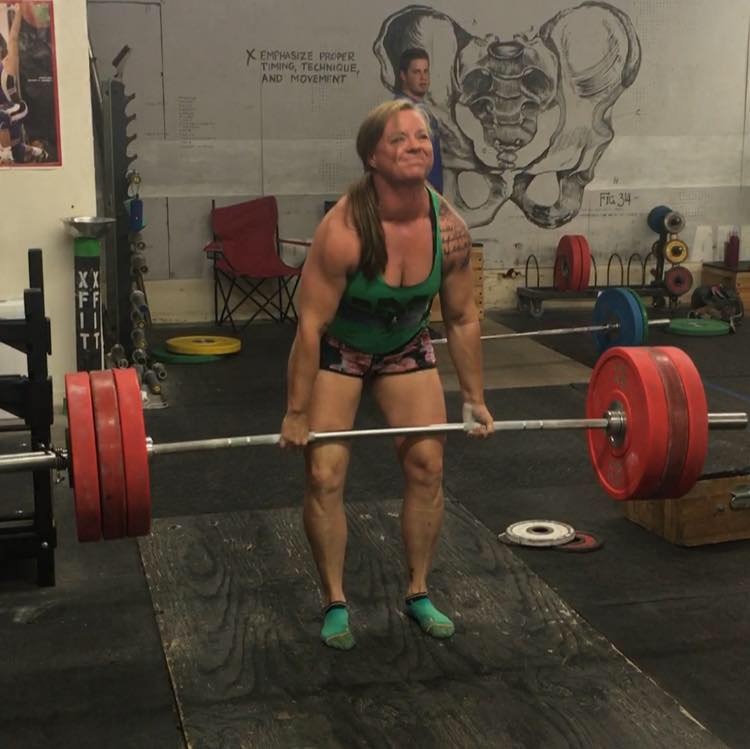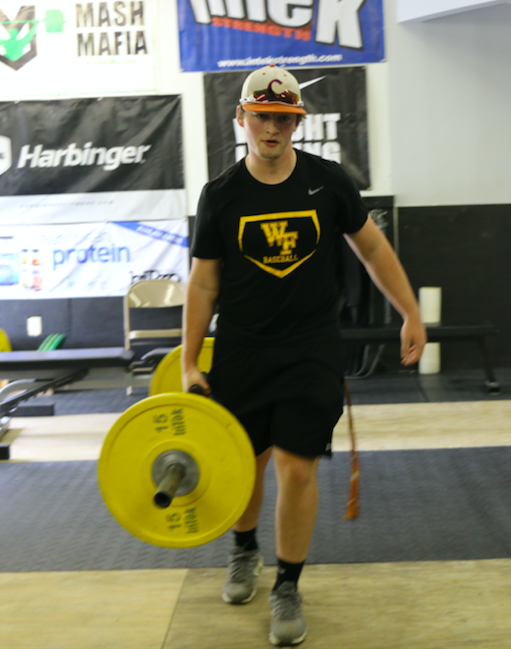In my time as a coach, I have watched athletes who should be world-class end up falling short due to a lack of grip strength.
These same athletes had all the other tools necessary to be strong – amazing leg strength, an incredible posterior chain, beautiful movement, optimal mobility, and the ability to produce massive amounts of power. But they lacked one key ingredient… hands.
Hand size and grip strength are important for all sports – not just strength sports. Think about it for just a second. In football, you need hands for catching, controlling your opponent, and tackling. In basketball, you need hands for catching, dribbling, passing, and shooting. In wrestling, you need strong hands to control your opponent. Have you ever met and shaken hands with a world-class wrestler or fighter? If you have, then you know they all have death grips. You get the point.
FARMER STRONG
The older I get, the more fascinated I become with this age-old strength art. I remember my grandfather’s grip and forearms. They were scary with a massive amount of muscularity. He was a farmer, so he was always working grip strength. He was the original strength athlete in our family, and he constantly amazed people with his ability to carry two partially wet bales of hay in each hand and throw them on top of loaded trucks. That’s roughly 120 to 150 pounds in each hand.
Growing up on the same farm, I naturally have strong hands and muscular forearms. I was able to double overhand hook grip an 804 pound deadlift in competition. I’ve double overhand deadlifted over 500 pounds without a hook grip on several occasions. Grip is something my parents helped me with by giving me big hands. Growing up on the farm did the rest.
When my boys were born, the first thing I did after welcoming them into the world with a hug was to check their hand size in relation to the rest of their body. Luckily I did my job. Both boys have catcher’s mitts for hands.
YOU SHOULD TRAIN THE GRIP
But what if you don’t have large hands? You should train the grip.
What if you do have large hands? You should still train the grip.
If you have big hands (especially long and not particularly fat hands), you probably won’t have trouble with grip until you are handling some massive loads. If you have short or thicker hands, you will want to start working on grip strength as early as possible in your training career. Either way, you don’t want to wait until you are outlifting your grip.

There are two main types of grip strength: squeezing (or concentric) grip strength and holding capacity (or isometric) strength.
This article is going to focus mainly on holding capacity strength, also known as isometric strength. This is the type of grip strength relevant to the deadlift, clean pull, and snatch pull. The snatch pull can be difficult because you have to overcome vertical and lateral forces in the grip. During these lifts, an isometric contraction is used to hold on. I will probably write another article someday on all the different elements of grip, but today we are focused on grip in relation to the pull.
[thrive_leads id=’10907′]
DEVELOPING GRIP CAPACITY: THE MORE SPECIFIC EXERCISES
Here are a few exercises I have used to create an unbreakable grip.
DEADLIFT WITH A SLIGHTLY LARGER DIAMETER BAR
A slightly bigger bar works in two ways. First, the body will adapt to the bigger diameter and over time get stronger and stronger from the new stimulus. Second and along the same lines, an isometric contraction makes the new joint angle of the hands stronger. Like Mel Siff noted in his book Supertraining:
“…isometric training also produces significant strength increase over a range of up to as much as 15 degrees on either side of the training angle. Moreover, as with all strength measurements, there is a specific force or torque versus joint angle curve for each type of muscle contraction, so that it is highly unlikely that a strength increase would be confined to a very precise angle and nowhere else in the range.”
Basically, getting stronger in the new joint angle will also strengthen the original angle. Using the conjugate method, the new joint angle prevents the body from refusing to get stronger due to accommodation. The adaptation from the new angle caused by the thicker bar will then aid with getting the original angle stronger.
I recommend multiple sets of one to five repetitions with a slower eccentric, mainly to increase the time of the isometric contraction.
BILATERAL PARTIAL COMPETITION GRIP DEADLIFT AND HOLD
A deadlift from blocks allows you to hoist more weight than a lift from the floor. I recommend using your normal grip (either mixed grip or hook grip) for specificity. If you don’t use your competition grip, you won’t be able to handle enough weight for specific adaptations to occur. In this case I don’t recommend high repetitions, as most of you will be focusing on increasing grip for your max.
I recommend three to five sets of one to three repetitions with loads greater than your current max from the floor, with holds of 15-20 seconds. When you can hold a specific weight for all sets and reps for 15-20 seconds, add weight the following session. You can use this method one to three times per week.
UNILATERAL PARTIAL DEADLIFT AND HOLD
Performing this movement unilaterally can prevent grip asymmetries, since you have to hold with each hand for equal time. The distance of the partial deadlift isn’t as important as the hold itself.
I recommend three to five sets of one to three repetitions per hand with loads as big as possible, keeping the weight the same per hand, with holds of 15-20 seconds. When you can hold a specific weight for all sets and reps for 15-20 seconds on each hand, add weight the following session. You can use this method one to three times per week.
UNILATERAL OR BILATERAL FARMER’S CARRY
This is one of my favorites because it is also good for trunk and hip stability. We perform carries one to three times every single week from our weightlifters to our general fitness folks. One key for specificity reasons: you will want to use handles with a diameter as similar as possible to your deadlift bar.

I recommend three to four sets of 20 yards. 20 yards is a good amount because you can use weight more relevant to your deadlift. Once you can handle a specific weight for three to four sets without dropping the bar, you will want to increase the weight.
DEVELOPING GRIP CAPACITY: THE LESS SPECIFIC EXERCISES
AXLE BAR DEADLIFTS
Personally I love these for general strength purposes. The diameter might be a bit much for totally specific gains in strength. However, considering the earlier statement from Mel Siff, you will still notice gains in overall isometric grip strength. These would be great early in a macrocycle if you were looking to increase your grip over a year’s time.
I recommend multiple sets of one to five repetitions with a slower eccentric, mainly to increase the time of the isometric contraction.
PLATE PINCH GRIP TRAINING
I love this exercise. This exercise definitely refers to capacity grip training, but it lacks the specificity of a deadlift hold. We performed these at the Olympic Training Center during my short stay. Personally I noticed a difference in grip strength – but just about everything I do for grip training works for me.
I recommend either pinch-gripping a 25kg or 20kg competition bumper plate. Or you can pinch-grip two metal 10-pound or 25-pound plates together. Once you can carry or hold the plates for 20 seconds, move on to a heavier and more challenging plate.
AXLE BAR HOLDS
Once again, even though the specificity isn’t there, I still love these for strengthening overall grip. Isometric work has at least some carryover throughout the range of motion, but a more specific bar will always work best.
I recommend three to four sets of one to three repetitions for 15-30 seconds. When you can complete all sets at 30 seconds, increase the weight.
[thrive_leads id=’8207′]
Grip strength training is so much fun. There are so many ways to train your grip to get stronger.
Obviously grip strength can help the deadlift in powerlifting. However, grip training can help athletes in their struggle to both snatch and clean more weight. A secure grip will send a signal to the body to fire on all cylinders. A weak grip can cause the body to prematurely shut things down due to a system weakness. Let’s work hard to keep the system firing properly, so we can all maximize our numbers on the platform.